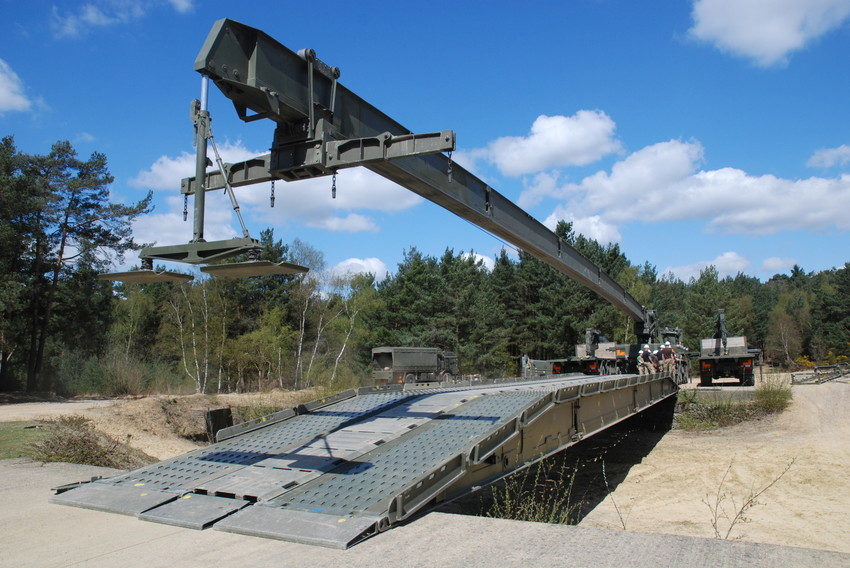
Engineers based at BAE Systems’ site in Telford, Shropshire are testing an integrated Bluetooth and sensing technology which reports the remaining service-life of military bridging systems.
The new ‘fatigue monitoring’ technology continuously detects the stress and strain on bridges designed to be used by tanks such as the Challenger® 2, which weighs in at more than 60 tonne.
The sensors then wirelessly transmit data to a handheld device, allowing soldiers to easily assess the health of the bridge.
Without the use of an automated fatigue monitoring system, the remaining service life of rapidly deployable military bridges is based on manual records and is difficult to judge, resulting in bridges being retired early or overused.
The system is currently being put through its paces at BAE Systems’ Bridge Test Facility.
The Facility simulates thousands of bridge crossings by a variety of wheeled and tracked vehicles, allowing BAE Systems to assess bridge performance using comprehensive data records on how the various components perform.
John Lees, Bridging Business Manager for BAE Systems Land (UK) said: “The biggest obstacle to monitoring bridge health is achieving a continuous flow of accurate data telling you what the bridge is experiencing. Simply monitoring the number of crossings – as most military users do now – doesn’t give an accurate picture. Our new solution monitors and analyses all of these variables to give a real-time, accurate assessment of bridge condition.
“It will make it easier to use our bridges in civilian situations such as disaster relief, where keeping accurate data on crossings is very difficult. It will also reduce whole-life ownership cost by ensuring bridges are serviced only when required and that they can confidently be used for their entire service life.”
image © BAE Systems
If you would like to join our community and read more articles like this then please click here
BAE Systems Bluetooth fatigue monitoring military bridging systems







